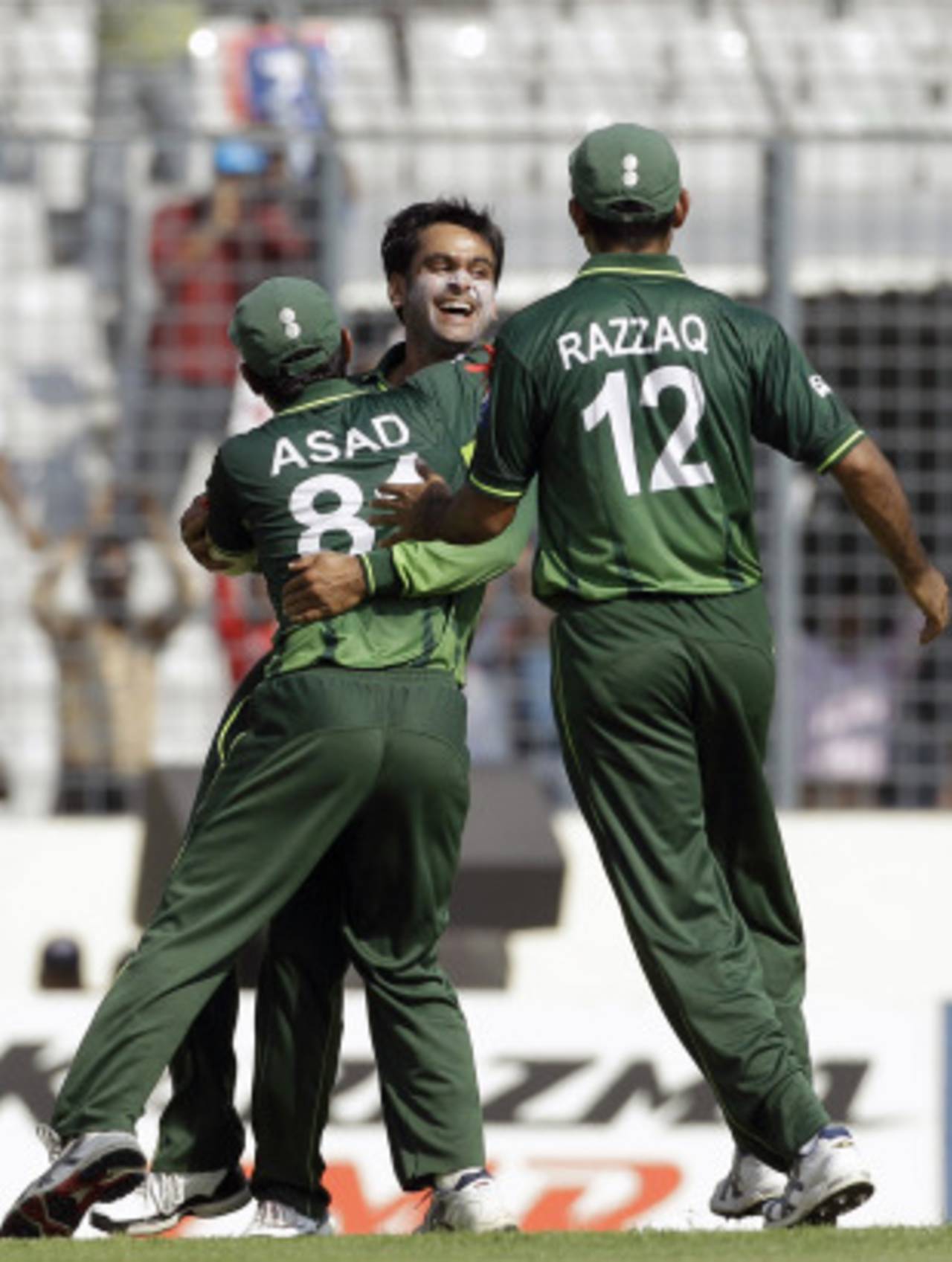There is so much that is substantial about
Mohammad Hafeez it's difficult to believe he has had such an insubstantial career so far. He's been jipped around in his career a fair bit, of course, but then which Pakistan player - in the current side alone - hasn't?
Just for the record, he is an opener but he has played all kinds of roles, batted in all kinds of positions, in all formats, over an eight-year career. Sometimes he has been an allrounder, other times he has not been given a bowl at all. Since his latest return, last summer against England, he has gone back to how he arrived in international cricket: an opener who is a more than handy offspinner.
The thing is, he is a smart man, a smart cricketer who thinks clearly and rationally about his game and the game itself. He's always looked a good batsman, capable of threading fields as well as clearing them. Never more does he look that class of batsman than when he drives or pulls.
He runs well too and domestically he has shown he knows how to construct an innings. He has technical kinks, as most batsmen not named Sachin Tendulkar do, falling over too much to straighter balls, or chasing outside off every now and again. The problem is an obvious and old one: he just keeps getting out. But if there was an award in cricket - and there really should be - for just the most authoritative and prettiest 20s and 30s, he'd be a winner.
He's had a disappointing World Cup with the bat, again finding a blip just when he seemed to have made a career breakthrough over the last six months. Instead, he's made up by becoming an integral component of the most varied bowling attack of the tournament. It has come to be that usually his bowling has been a better platform to showcase his game-awareness than his batting; and there's a logic to that. You can have, after all, ten overs as a bowler to show it, whereas one ball can undo everything and make you look a fool as a batsman.
His opening spell on Wednesday, in every sense, shaped Pakistan's entire performance, a startlingly ruthless one. Saeed Ajmal may be the better spinner and he may have been the sharpshooter they drafted in for the kill, but it's telling that Pakistan opened with Hafeez.
Rashid Latif, his first international captain, used to bowl him with the fielding restrictions in place when he first arrived on the scene, so he's always been comfortable in the role. The challenge of it, the problem-solving nature of a Powerplay spell, seems to appeal to him: how not to get hit by Chris Gayle, how to sneak a wicket, how to bowl the right angles, how to set just the right field?
He doesn't usually even get the turn he got in Mirpur, and the ones that got him the wickets went straight on. But it wasn't really the spin that did West Indies in as much as it was the control. From behind the batsman at the striker's end, when Hafeez was bowling, the ball could not be seen once it was over halfway down the pitch in flight: he was dropping it so straight and on such a length that, for a while, all you could see from the back was the batsman squaring up at the very last instant, uncertain about how far to go forward, content with a victory if he just prodded the ball away.
In that first spell of eight overs, he gave nothing to cut, even less to drive and barely a ball to clip away to midwicket or square leg. The game was made there and then. In his last 20 one-day overs now, including the game
against Australia, he's given away 42 runs for three top-order wickets.
And then, as so often used to be the way with allrounders in the past, success in one discipline begat success in the other. It was a nothing target and the West Indians were down; a pretty 30 would've done. Instead, an equally pretty and pumped 61 made sure the job was done good and proper. A substantial hand in fact, and a contribution worthy of a worthy player.
Osman Samiuddin is Pakistan editor of ESPNcricinfo
